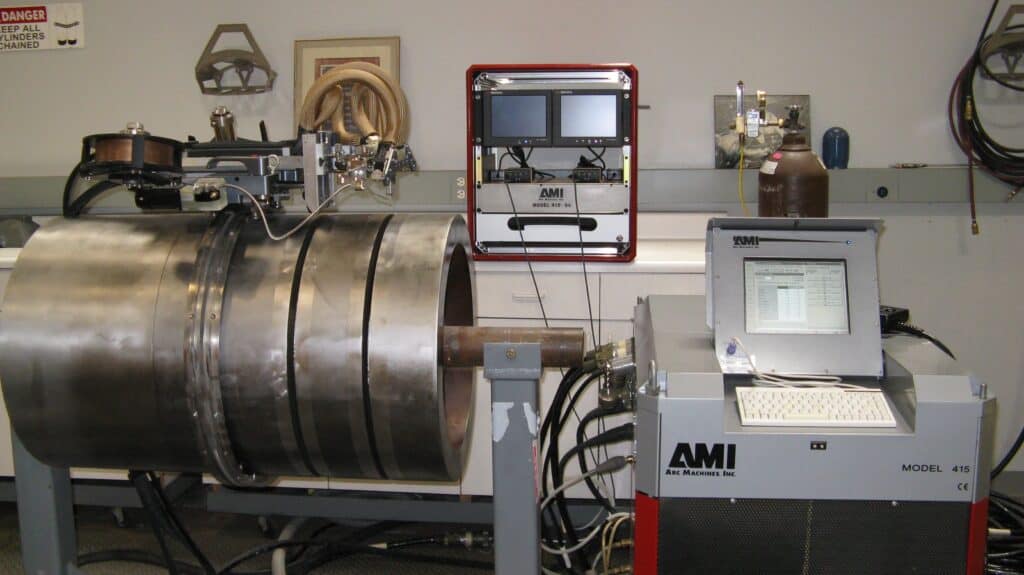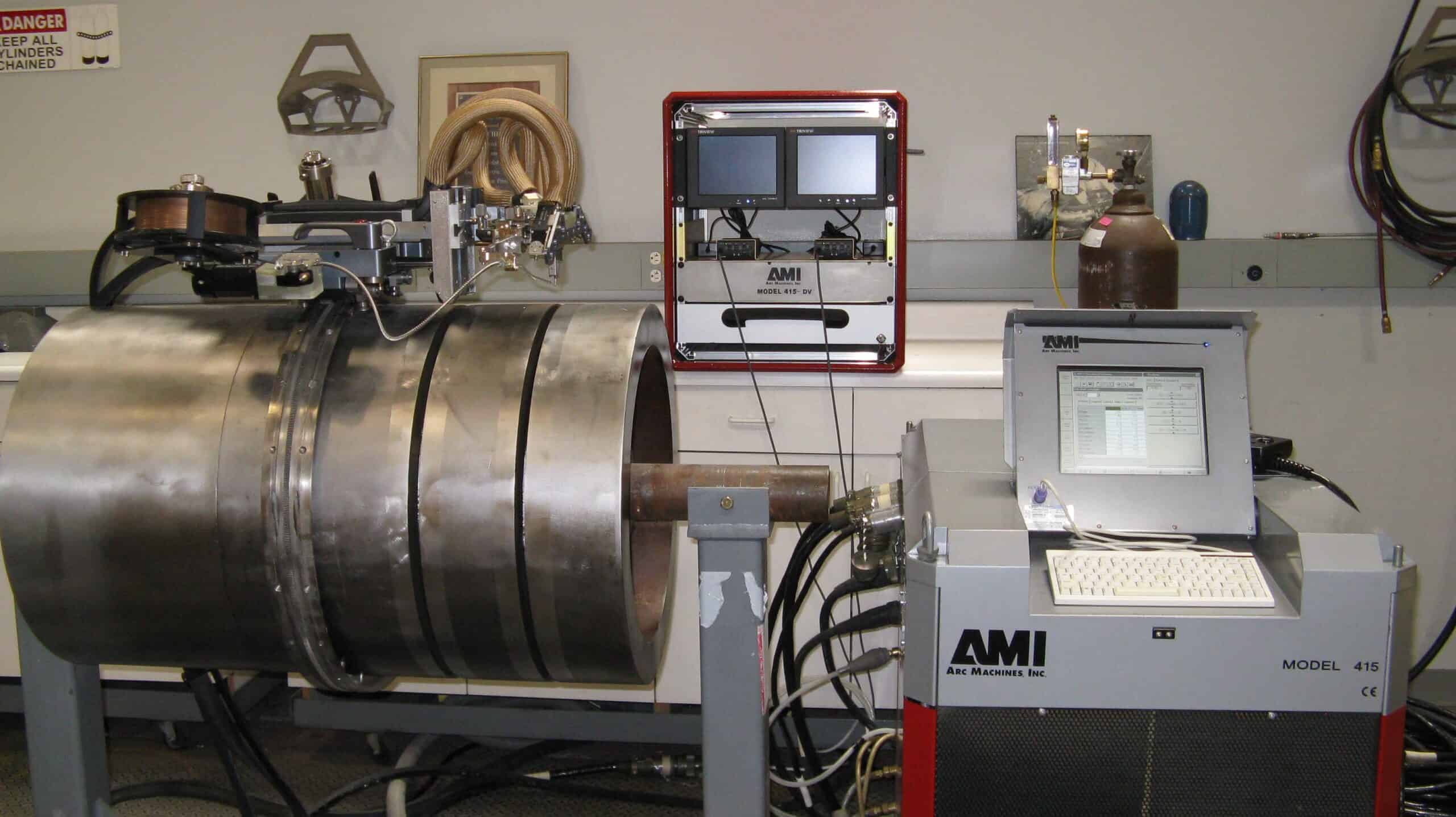
It isn’t uncommon for the wire in a wire feed arc welding machine to snag, melt back into the tip, and bring welding to a halt. The welder must then disassemble the machine to correct the problem. The culprit is usually the liner that guides the wire, which welders often forget to check for wear when performing standard maintenance and inspection. When the surface of this liner erodes, it can start snagging wires. Issues like a snagged wire result in time spent diagnosing the problem, disassembling the feed, and reworking the weld.
Weld data monitoring offers a way to identify and prevent maintenance issues before they interfere with an in-process weld. Weld monitoring technology connects the welder to databases in real-time. Connected machines track hours worked and can automatically schedule routine—yet often overlooked—preventative maintenance. Weld data monitoring also benefits welding efficiency, quality, reporting, and training by enabling the collection and sharing of data.
What Can Be Tracked With Weld Data Monitoring
A great deal of data is generated during the welding process. There is the temperature of the workpiece, weld head, and filler material at the beginning of welding, during, and afterward, as well as the type of material used for both the workpiece and filler. The voltage and amperage setting of the machine and the wire speed settings, if applicable, are also part of the weld data. Weld data monitoring also makes it possible to set up an alert if environmental factors like humidity and temperature are outside a certain range and could affect the weld.
Weld data monitoring allows the information monitored during a welding operation to be easily recorded.
The use of weld data monitoring allows these factors to be monitored and recorded, enabling:
- Traceability: Weld data monitoring allows completed welds to be traced back to the machine that made them and the operator who was using the machine.
- Connectivity: Welding parameters can be recorded to a centralized cloud location, and working parameters for materials, conditions, and environments can be pushed to many individual machines.
- Automated Alerts: Connected machines can send alerts when issues arise or as scheduled by the user, ensuring the free flow of information needed by operations managers, service technicians, and welding engineers.
- Documentation: Weld data monitoring allows the information monitored during a welding operation to be easily recorded, making it possible for weld inspectors and other relevant personnel to easily certify that correct welding parameters were followed.
Weld monitoring technology records data and makes it transferable from multiple concurrently running systems in near real-time. This data is stored in a single, comprehensive database that can be secured behind user firewalls and security protocols. Captured data can also be shared across computers, tablets, and smartphones. Weld data monitoring enables remote diagnostics and troubleshooting, giving technicians, welding engineers, quality control staff, trainers, and other stakeholders a full suite of tools that can be used to enhance weld quality and worker performance.
Weld Data Monitoring Increases Welding Efficiency
Welders using shielded metal arc welding (SMAW) are used to welding until the electrode is the barest nub sticking beyond the stinger and their gloves are at risk of catching fire. Part of the reason is that welding consumables cost money. Yet SMAW welding is perhaps the least expensive form of arc welding. The inert gases that enable gas metal arc welding (GMAW) and gas tungsten arc welding (GTAW) are significantly more expensive. Consumables like filler rods and wire cost much more pound-for-pound than the flux-coated rods used for SMAW. Non-consumable tungsten electrodes are especially expensive due to the rarity of the material and specially alloyed types of tungsten electrodes are even more costly. Albeit more costly on the front-end, these methods and technologies are designed to be more cost-efficient over the course of a project or production line. Companies can find even more efficiency when the proper sets of data are collected and analyzed or when they can leverage lessons learned from previous datasets.
Weld data monitoring allows project managers to analyze collected data in order to:
- Reveal problematic welding habits or oversights in welding practices that lead to wasted materials or time.
- Identify faulty equipment by allowing direct comparisons of welding machines in operation concurrently or by allowing the comparison of machines operating in similar environments or on similar projects.
- Reveal opportunities for managing projects more efficiently through long-term data analysis.
The final point is especially important where weld repeatability is a primary consideration, such as in very demanding, high-specification industries.
Data Collection Improves Weld Repeatability for Automated Welding
Weld data collection is at the heart of mechanized welding processes like orbital welding. The great advantage of automated arc welding machines is that they can create high-quality welds time after time. However, this depends on precisely reproducing every element and factor in a successful weld on all subsequent welds. Even when operators pay careful attention to machine settings and environmental factors, they can and do miss things.
Weld data monitoring of automated orbital welding makes a wealth of data available that can be used to refine welding procedures even further.
Automatic weld data monitoring is not subject to human error. It captures data that welders and machine operators can miss either through holes in prescribed standard operating procedures, distraction, or inattention. This reduces weld defects that may occur due to failure to exactly replicate an element of a successful welding procedure. Weld data monitoring of automated orbital welding also makes a wealth of data available that can be used to refine welding procedures even further. This increases weld quality while reducing rework, materials use, waste, and, ultimately, the cost of each weld. Weld data monitoring brings automated orbital welding machines to the next level.
Arc Machines, Inc. specializes in reliable orbital welding systems equipped with the latest in new welding machine technologies, including weld data monitoring. For inquiries regarding products, contact sales@arcmachines.com. For service inquiries, contact service@arcmachines.com. Arc Machines welcomes the opportunity to discuss your specific needs. Contact us to learn more.





